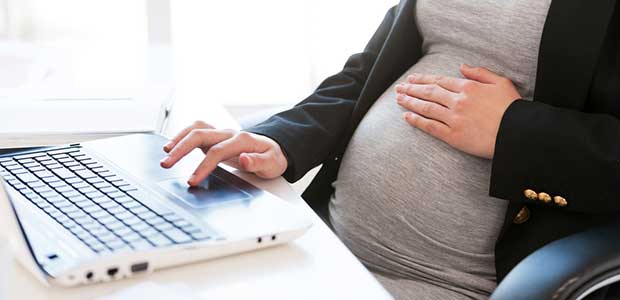
How to Keep Pregnant Workers Safe and Supported
Pregnancy discrimination in the workplace—direct or indirect—can have effects on the woman and baby’s health. Make sure you are supporting and respecting your pregnant workers, especially with new legislation.
Many working women choose to have children, and pregnant workers are increasingly common these days. Laws and regulations to protect those workers, however, have not existed until recently, and many pregnant workers face workplace discrimination.
Workplace discrimination against pregnant women or mothers with young children is more common than you may think. The Pregnant Workers Fairness Act was introduced in May of 2020, and although it has gained broad bipartisan and business support, it has not yet been passed by the House of Representatives, or passed into law. Many argue this bill is long overdue.
The Act outlines many of the issues pregnant workers face in the workplace—including job discrimination and pay stalls, lack of time to breastfeed or take breaks and lack of medical support from employers.
While the Act does not get rid of the many issues pregnant workers face, it is a good step in better protecting a large portion of the American workforce. In fact, between 1997 and 2011, nearly 6,000 pregnancy discrimination charges were filed with the U.S. Equal Employment Opportunity Commission (EEOC) and state or local FEPAs in fiscal year 2011. This was an almost 50 percent increase from the slightly fewer 4,000 complaints filed in 1997, according to an American Progress article.
However, the number of complaints does not represent the prevalence of pregnant worker discrimination cases women face each year, as many go unreported. For example, research conducted by Childbirth Connection, an initiative focused on improving maternity care, estimated that approximately 250,000 pregnant workers are denied requests for accommodations each year. Additionally, women often fear retaliation from employers, which may contribute to a lack of reporting of discrimination cases.
Types of discrimination against pregnant workers can vary, but here are a few examples of pregnant worker discrimination to avoid:
- denying someone a request for a temporary accommodation—such as not lifting heavy boxes, often called light duty, or not working with toxic chemicals
- denying someone reasonable health accommodations including extra bathroom breaks or a sitting position
- firing or denying someone a promotion as a result of being pregnant
- perpetuating perceptions or stereotypes about the capacities and abilities of pregnant women
- requiring an employee to take leave, whether paid or unpaid, if another reasonable accommodation can be provided to the known limitations related to the pregnancy, childbirth, or related medical conditions of an employee
An employer’s discriminate in one or any of the above ways could harm the unborn child or the mother, damage the mother’s career and get you into legal trouble.
One recent study by Baylor University found that pregnancy discrimination in the workplace indirectly relates to increased levels of postpartum depressive symptoms for mothers and lower birth rates, lower gestational ages and increased numbers of doctor visits for babies.
“Despite being illegal, pregnancy discrimination still takes place in the workplace,” said lead author Kaylee Hackney, Ph.D., assistant professor of management in Baylor University's Hankamer School of Business. “Obviously, this is troublesome. Our research highlights the negative impact that perceived pregnancy discrimination can have on both the mother's and the baby’s health.”
The study argues that discrimination in the workplace can greatly add to the mother’s stress, anxiety and depressive feelings—which has an effect on the baby’s health, too. The study, published in June of 2020, also reports that over 50,000 pregnancy discrimination claims were filed with the EEOC in the last decade.
Here are some ways to actively avoid pregnancy discrimination it the workplace for the safety and health of your pregnant workers and their babies:
- provide flexible schedules
- keep information channels open and the employee in the loop, specifically with regards to work-family benefits and expectations leading up to leave/returning from leave
- accommodate prenatal appointments
- help to plan maternity leave arrangements
- normalize breastfeeding in the workplace
“Overall, I would suggest that managers 1) strive to create a workplace culture where discrimination does not take place and 2) not make assumptions about what pregnant employees want,” Hackney said. “The best approach would be to have an open dialogue with their employees about what types of support are needed and desired.”
You can read OH&S Magazine’s article on pregnant women and the coronavirus here.